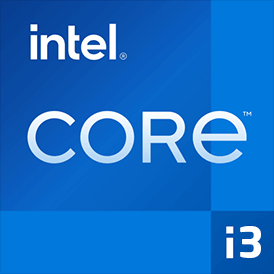Intel Core i7 10700T vs Intel Celeron G1101
We compared two desktop CPUs: Intel Core i7 10700T with 8 cores 2.0GHz and Celeron G1101 with 2 cores 2.266GHz . You will find out which processor performs better in benchmark tests, key specifications, power consumption and more.
Main Differences
Intel Core i7 10700T 's Advantages
Released 10 years and 4 months late
Integrated graphics card
Higher specification of memory (2933 vs 1066)
Newer PCIe version (3.0 vs 2)
Larger L3 cache size (16MB vs 2MB)
More modern manufacturing process (14nm vs 32nm)
Lower TDP (35W vs 73W)
Intel Celeron G1101 's Advantages
Higher base frequency (2.266GHz vs 2.0GHz)
Score
Benchmark
Geekbench 5 Single Core
Intel Core i7 10700T
+200%
1166
Celeron G1101
388
Geekbench 5 Multi Core
Intel Core i7 10700T
+739%
6180
Celeron G1101
736
General Parameters
May 2020
Release Date
Jan 2010
Intel
Manufacturer
Intel
Desktop
Type
Desktop
x86-64
Instruction Set
-
Comet Lake
Core Architecture
Clarkdale
i7-10700T
Processor Number
-
LGA-1200
Socket
Intel Socket 1156
UHD Graphics 630
Integrated Graphics
Intel HD
-
Generation
Celeron (Clarkdale)
Package
-
Transistor Count
0.382 billions
14 nm
Manufacturing Process
32 nm
-
-
-
25-35 W
Power Consumption
73 W
-
-
-
100 °C
Peak Operating Temperature
-
-
Foundry
Intel
-
Die Size
81 mm²
-
-
-
-
-
-
-
-
-
CPU Performance
8
Performance Cores
-
16
Performance Core Threads
-
2.0 GHz
Performance Core Base Frequency
2.266 GHz
4.5 GHz
Performance Core Turbo Frequency
0
-
-
-
-
-
-
-
-
-
-
-
-
8
Total Core Count
2
16
Total Thread Count
2
100 MHz
Bus Frequency
133 MHz
20x
Multiplier
17.0
-
-
-
64 K per core
L1 Cache
64 K per core
256 K per core
L2 Cache
256 K per core
16 MB shared
L3 Cache
2 MB shared
No
Unlocked Multiplier
No
-
-
-
-
-
SMP
1
-
-
-
-
-
-
Memory Parameters
DDR4-2933
Memory Types
DDR3-1066
128 GB
Max Memory Size
-
2
Max Memory Channels
2
45.8 GB/s
Max Memory Bandwidth
-
No
ECC Memory Support
Yes
Graphics Card Parameters
true
Integrated Graphics
-
350 MHz
GPU Base Frequency
-
1200 MHz
GPU Max Dynamic Frequency
-
192
Shader Units
-
24
Texture Units
-
3
Raster Operation Units
-
24
Execution Units
-
15 W
Power Consumption
-
4096x2304 - 60 Hz
Max Resolution
-
0.38 TFLOPS
Graphics Performance
-
AI Accelerator
-
-
-
-
-
-






